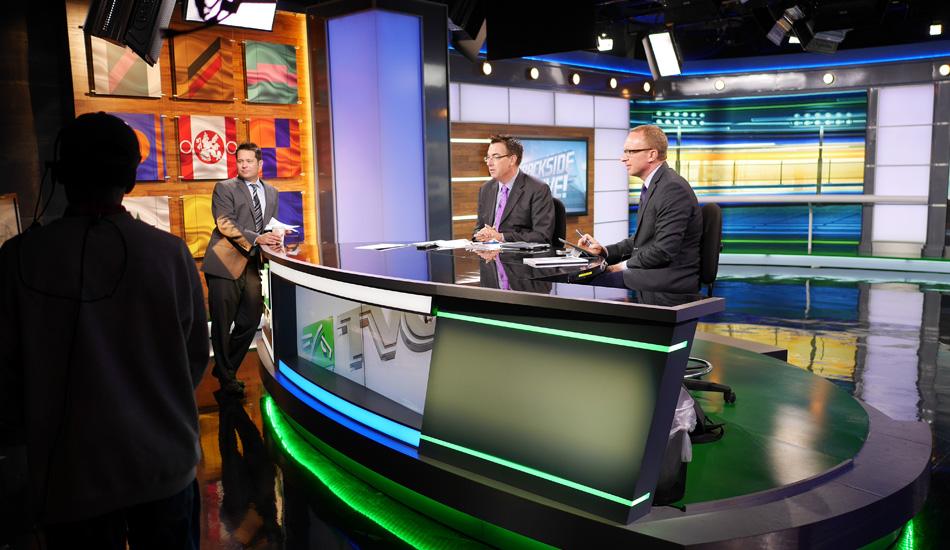The solution
After originally awarding the project to multiple suppliers, TVG, working with systems integrator Diversified Systems, ultimately selected Imagine Communications as its primary solution provider. The massive undertaking included equipment and software from across Imagine Communications’ network, playout and distribution portfolios. TVG called on Imagine Communications to replace its media asset management (MAM) system, routing infrastructure, production servers, and master control operations, as well as tightly integrate with third-party editing, graphics and logging systems.
At the heart of the transformation was Imagine Communications’ MAM technology and solutions, which enabled TVG to realize significant agility and performance improvements by replacing tapebased operations with state-of-the-art file-based workflow. To create even a 60-second clip in the past, says Geraty, the team would need to pull a tape and jot down notes on paper while watching the entire race – before handing off the tape to an editor to create the clip.
The Imagine Communications’ Nexio™ asset management equipment delivers nonlinear workflow that automates and enhances the operation. In addition, metadata that was rarely stored in the past, such as details about the horse and jockey, track conditions, location and time of day, is now automatically logged at ingest, enabling huge improvements in speed and efficiency. Clips can now be assembled and aired in seconds, resulting in features and live commentary that are much more engaging and entertaining than what TVG could deliver in the past.
“The process has improved to the point where we can now spend more of our time focusing on the creative, rather than the logistics of how to get the job done,” says Geraty. “The logistics are now all handled in software. What used to take two hours is now handled in 10 minutes.”
Forming the backbone of TVG’s transformed facility is Imagine Communications’ Platinum™ routers with integrated multiviewers. Designed to support high-quality routing of all audio and video, the Platinum routers enable TVG to future-proof its facilities by supplying ample overhead to introduce additional channels, support 4K and eventually 8K resolutions, as well as provide a foundation for a transition to IP, should TVG go that route in the future.
In fact, the future flexibility of the new facility was tested before the dust had even settled. Shortly after upgrading its facilities, TVG acquired its major competitor, requiring Imagine Communications to expedite the addition of a new automated master control channel and expand the infrastructure to house the full second live studio production capabilities for the newly added network audiences.
Geraty stresses that as important as Imagine Communications’ equipment was to the overall outcome of the project, the crucial competency that the supplier brought to the engagement was its ability to understand TVG’s business objectives. “It was imperative that Imagine understood what our people do,” he added.
The added agility that comes with moving to a modern file-based workflow has also created additional promotional opportunities. In the past, says Lee, creating a buzz in a social media outlet like YouTube was extremely difficult. Social media thrives on immediacy. If something interesting happened at the track, TVG producers, hamstrung by antiquated workflow, were often unable to create a clip that could be posted immediately to drive viewers to the company’s web site or television broadcast.
Now, says Lee, a clip can be captured and posted to social channels in minutes. “If someone says something interesting on a show,” adds Lee, “we want to get that out on YouTube.”
Additional outcomes of the overhaul were dramatic improvements in reliability and ease of use related to the automation of production and asset management processes, says Geraty, adding that reliability and error-free operations will always be top priorities of a broadcast facility.
“Our people left a linear, tape-based work space and stepped into a completely modern nonlinear work space, “says Geraty. “They haven’t made one on-air error as a result of the conversion.”
Lee sums up the outcome of TVG’s collaboration with Imagine Communications by borrowing from the lexicon that’s native to his industry. “Imagine has been helpful, supportive and thorough every step of the way,” says Lee. “It’s been a great process — from start to finish.”



